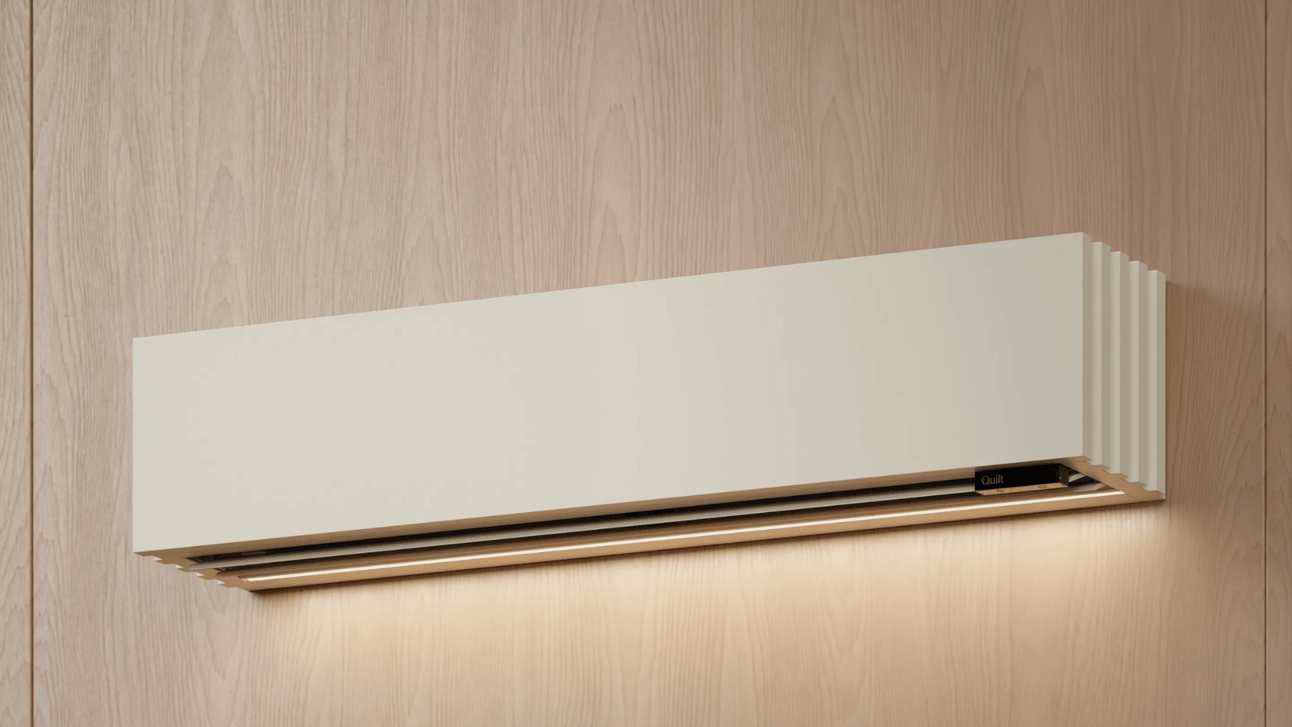Quilt plots its future in the HVAC industry
The company employs its own technicians today but will soon partner with contractors across the country

Image: Quilt
Quilt, the two-year-old HVAC startup, recently announced that its flagship heat pump achieved a 25 SEER2 rating, as certified by AHRI, making it the “most efficient 2-zone heat pump on the market.”
-
The intrigue: The company has gained lots of attention since launching, so we caught up with CEO Paul Lambert to better understand its strategy and how contractors fit in.
Catch up: Quilt manufactures a “smart, intuitive, design-forward” ductless system starting at $6,499 per zone, and raised $33 million in April. See more.
Why it matters: The company’s goal, put simply, is to accelerate the transition to heat pumps, which have outsold gas furnaces for two years in a row, according to AHRI shipment data.
-
However, Lambert notes, there’s “friction” around the transition today, which led his company to a “vertically integrated strategy of building, installing, and servicing the product,” he says.
-
This allows it to control the customer experience from end to end.
What’s happening: Quilt currently operates in the Bay Area, and while it is a manufacturer, it’s also a licensed California contractor.
-
Technicians are hired as on-staff employees and given equity in the company.
-
“It’s useful when the person doing the installation can go back to the office and sit beside the person designing the mounting bracket for that hardware,” Lambert says.
-
“That does not currently happen in the industry — there aren’t feedback loops that lead to [that kind of] product iteration.”
Yes, but: The company recognizes the limitations of hiring its own technicians across the country, so it plans to partner with contractors as it scales.
-
Lambert didn’t provide an exact timeline, but he outlined two potential approaches.
-
Quilt will either continue to perform installations itself and subcontract service and maintenance work to its contractor partners — or vice versa.
-
In both cases, homeowners will pay Quilt, and Quilt will pay contractors. He didn’t disclose any financial terms.
What’s next: Quilt will soon expand to Los Angeles and focus, over the next twelve months, on building a repeatable growth playbook.
-
Lambert says this includes refining its pre-, day-of, and post-install checklists, and warehousing and training operations.
-
The company is sold out through February, with March as the first available install date.
The bottom line: “We think the energy transition is one of the most important issues of our time, and contractors have a really important role to play in that. They’re the single most influential voice in the journey,” Lambert says.
📬 Get our stories in your inbox
Keep reading
HVAC Deals: April 2024
Recent investment activity from around the industry
Contractor reporting requirement back in effect — for now
Following a previous block, qualifying U.S. businesses are again required to file beneficial ownership reports by March 21
HVAC investments flowing to the South, analysis shows
Between 2022 and 2024, private equity-backed platforms favored the South when making acquisitions, according to a new analysis


